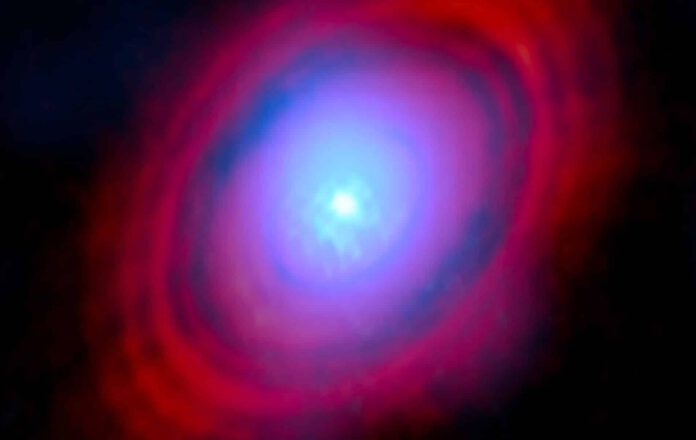
Recent findings confirm what scientists have long suspected; water potentially plays an important role in planet formation.
The Use of ALMA
The study utilized the Atacama Large Millimeter/submillimeter Array (ALMA) in Chile to observe the young sun-like star HL Tauri, located about 450 light-years from Earth. Surrounding this star is a protoplanetary disc, filled with matter that could ultimately form planets. The researchers searhed for water within this disc using ALMA, finding plentiful amounts of water vapor in the regions where planets potentially form. “We not only detected this water, which researchers have done before – but we’ve also established quite exact locations where the water is within the disc,” explained scientist Mathieu van der Donckt.
Planet Formation
The observations reveal that the inner part of the protoplanetary disc contains at least three times as much water as all of Earth’s oceans. A significant amount of this water is located in the disc’s section where a hole is visible. These holes or ring-shaped gaps are formed by young objects moving in their initial orbits around their parent star, drawing surrounding gas and dust to them, thereby growing in size. According to lead researcher Stefano Facchini, these findings suggest that this observed water vapor may influence the chemical compositions of planets that form in these environments.
The Power of ALMA
The ability to map how water is distributed in a cool, stable and by extension, planet-forming, gas and dust disc surrounding a young star is exceptional; no researchers had achieved this before. Using a telescope on Earth to find water in space is indeed challenging, partly because of the significant amount of water vapor in our own planet’s atmosphere which can significantly distort observations. However, ALMA proved to be effective. “ALMA is currently the only facility capable of detecting the signal of water in a cool planet-forming disc,” stated researcher Wouter Vlemmings.
Dust Particles
Pellets of dust in the disc act as ‘seeds’ for planet formation. These particles collide and cluster together, creating increasingly larger fragments that orbit the star, which eventually can grow into planets. It is theorized that water aids this ‘growth process’. Scientists surmise that wherever it is cold enough for water to freeze into dust particles, these particles more efficiently stick together, thus creating an ideal environment for the formation of planets.
Life
Besides having implications for the formation of planets, the study also sheds light on the origin of life, as we understand it. Although the detection of water at HL Tauri does not indicate the presence of life, it does allow more insight into where water can be found as planets form. This information indirectly provides an image of the type of planets that could be formed and whether life could potentially emerge on them.
The researchers look forward to gaining a better understanding in the coming years of how planets form and to what extent water plays a decisive role in this process. In this regard, they are eagerly anticipating the upgrade that ALMA will soon undergo and the commissioning of the ESO’s Extremely Large Telescope. Especially the latter observatory is expected to provide an unparalleled insight into the inner regions of protoplanetary discs, i.e. the place where terrestrial planets can see the light of day.











